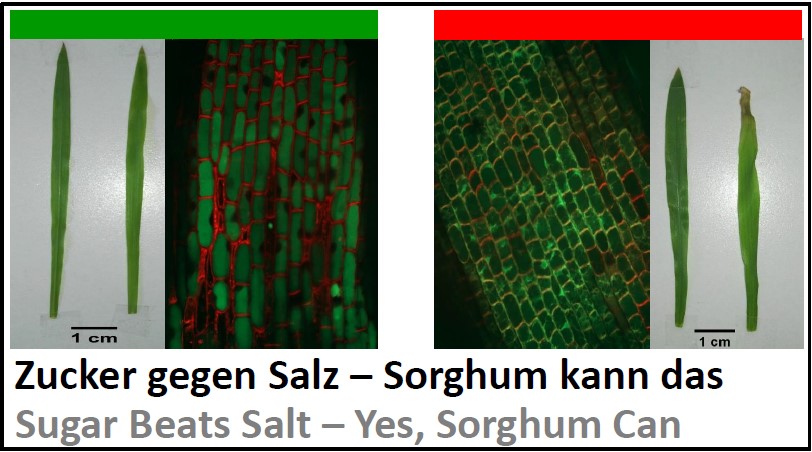2022_03 Sugar Cures Salt
 |
What was the question? Sorghum originates from East Africa and is, therefore, adapted to harsh conditions. Since a couple of years, we try to develop the potential of this rapidly growing plant for bioeconomy. Since it is very resilient, one can grow it even there, where no food is produced - the conflict bioeconomy versus nutrition can be circumvented. Rising sea levels make more and more areas prone to salinity. Wie sind wir die Frage angegangen? When a plant is exposed to salt stress, many genes are activated, while others are silenced. What this means, is often unclear - does an observed change reflect a very high stress level of the plant, or does it report that this plant is adapting to the stress? To shed light into the dark, we conducted a comparative study, using two genotypes of Sorghum - the Syrian landrace Razinieh is susceptible, while the Sugar Sorghum Della is equipped with a robust salt tolerance. Was kam heraus? The result of the quite comprehensive study is surprising - the roots are good in alarming the leaves swiftly about the arrival of salt. This allows the leaves to safeguard photosynthesis by multiple adjustments of their metabolism. They accumulate more sugar than usual and send the sugar to the root. This suport allows the root to sequester salt ions by the help of special pumps into the vacuoles of the growth zone. The work has now been accepted in Frontiers of Plant Science and is the base for the breeding of more resilient varieties in a targeted manner. Publication 184. Abuslima E, Kanbar A, Raorane ML, Eiche E, Hause B, Riemann M, Nick P (2022) Gain time to adapt – mechanisms of salt adaptation in Sorghum. Frontiers Plant Sci, accepted 06.09.2022 |
